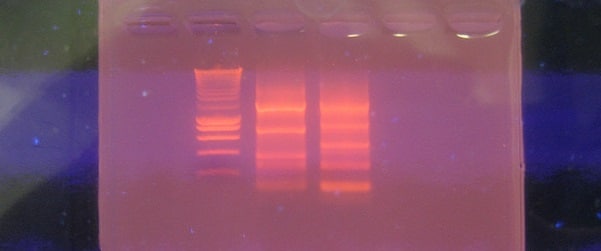There are a lot of “helpful suggestions” to wade through when it comes to perfecting your TRIzol Method technique, so let’s wade through the madness and share some tips! Comment your experiences, problems and tip below!
If you’d like to see the protocol I’ve tried, tested, and stuck with, look for my article called: Protein Extraction and Solubilization using the TRIZOL® Method. Cornell also has a nice article giving you the history of who came up with the spells and wand movements for this technique. It also takes you through the finer points of the chemistry involved.
This technique can be a royal pain, but here are some tips to help you get tip-top results!
Tips for Tip-Top Phenol-Chloroform Extractions and Ethanol Precipitations
1. RNase BEGONE:
Never ever let RNases near your samples or solutions! I like to spray my work area with RNase-zap. Also make sure the pipette tips, plastics/glassware (plastics are better) and water you are using are certified RNAase-free. If you check your purity with gel electrophoresis, ensure your agarose is RNase-free too.
2. Tissues are like bread—better when fresh:
Try to use fresh tissue samples. If this isn’t feasible, submerge your samples in RNAlater and store them at -80°C. Make sure you remove all of the RNAlater reagent before you add TRIzol® in later though!
3. Use the force:
When the protocol calls for vortexing, this is not the time for inverting your samples with love and care. You needs to be absolutely sure your mixture is just that, a mixture, or you’ll get poor separation results later.
4. Know your homogenizer:
In one lab I worked in, we had a very fickle homogenizer. It would overheat if you used it for longer than in small bursts and the higher setting would leave you covered in tissue tatters. Homogenizers are expensive so don’t expect to have the very latest version, it’ll probably be an oldie but a goodie that has some personality quirks. So, you should practice using your lab’s homogenizer, before you are forced to learn the hard way.
5. Clingy phases:
If your phases don’t separate well, one of two things has probably happened, either you forgot to add the chloroform or you skipped tip 3. Failing these, there could also be an unwelcome guest present in the mix, either because there are additives or even contaminants in the chloroform, or you’ve added a strong buffer, alkaline reagent, or organic solvent somewhere along the way. If you’re working with tissue, your samples may not have been sufficiently homogenized. If you’re working with cells, you can try rinsing them with PBS before adding the TRIzol.
This can still be (somewhat) salvaged. Add and equal amount of (RNase-free) water and chloroform to your tube, vortex, and centrifuge again. Just keep in mind that your RNA integrity number (RIN) might be low.
6. Don’t over dry your pellet:
If your pellet is firm, you can VERY GENTLY invert your tube on a tissue and tap the tube to encourage ethanol removal and then allow the remaining ethanol to evaporate at room temperature by balancing the tube upside down. If you’re worried that your pellet is too soft or you can’t see it, don’t tap the tube just roll the rim on the tissue. 6 minutes is enough time to let the pellet dry out. If you’re worried about RNAases on the tissue, you can spray it with some RNase-zap.
7. Speedy Gonzales:
Speed is a key factor people don’t always remember. When you’re first learning this technique, you’re going to be slower. Every minute longer it takes you, your sample is losing integrity. Be patient with yourself if you’re getting low yields at first. Focus on obtaining a pure product (test by NanoDrop spectrophotometry or gel electrophoresis). If it has been a few turns are you’re still having yield or purity issues, then you should get help from a more experienced lab member! That’s what they’re there for—we’re all in this together.
8. In the hood:
It’s always best to work in a fume hood (never a laminar flow hood—see this article for why) that has been thoroughly sprayed and wiped down with ethanol and an RNase removal solution. It’s best to keep the fumes out of the rest of the lab (and your labmates will thank you for not making it smell!).
9. Temperature matters:
This whole procedure takes quite a bit of time and sometimes you need your results fast! You can leave your ethanol precipitation at -80ºC for 30 minutes and get almost as much yield as an overnight precipitation step.
10. Talk it out!
Like most techniques, this one can be fiddly and your particular cell line or tissue type may call for a little tweaking of the protocol. Talk to anyone in your lab that has experience with what you’re working with, go to your favorite search engine and see what other people online have said, and look over papers on PubMed for modified protocols. Odds are that you’re not the first person to work with your cells or tissues, and whatever problems you’re having are not new or unique to you.
Best of luck!




